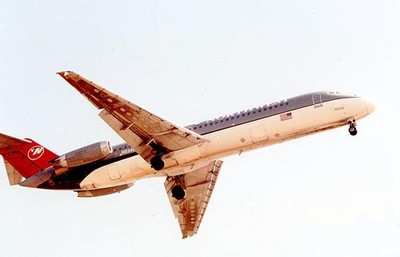Aero-Tips!
A good pilot is always learning -- how many times have you heard
this old standard throughout your flying career? There is no truer
statement in all of flying (well, with the possible exception of
"there are no old, bold pilots.") It's part of what makes aviation
so exciting for all of us... just when you think you've seen it
all, along comes a scenario you've never imagined.

Aero-News has called upon the expertise of Thomas P. Turner,
master CFI and all-around-good-guy, to bring our readers -- and us
-- daily tips to improve our skills as aviators, and as
representatives of the flying community. Some of them, you may have
heard before... but for each of us, there will also be something we
might never have considered before, or something that didn't
"stick" the way it should have the first time we memorized it for
the practical test.
It is our unabashed goal that "Aero-Tips" will help our readers
become better, safer pilots -- as well as introducing our
ground-bound readers to the concepts and principles that keep those
strange aluminum-and-composite contraptions in the air... and allow
them to soar magnificently through it.
Look for our daily Aero-Tips segments, coming each day to you
through the Aero-News Network. Suggestions for future Aero-Tips are
always welcome, as are additions or discussion of each day's tips.
Remember... when it comes to being good pilots, we're all in this
together.
Aero-Tips 03.10.06
The Northwest DC-9 touched down at Indianapolis. Landing was
much smoother than I’ve grown accustomed to, riding in the
back on long business trips. And the pilot did something I’ve
not experienced frequently on commercial carriers at all -- he/she
held the nose up during the landing roll, keeping the nosewheels
off the ground until elevator effectiveness waned, then deftly let
the tires kiss the pavement. It was an artful landing.

Aerodynamic Braking and Lightplanes
The Air Force is big on “aerodynamic braking”,
especially in fighter aircraft. Holding the nose high exposes a
larger cross-section of the aircraft to the relative wind,
increasing drag and helping to slow it down. The practice
apparently came along with the advent of swept-wing fighters and
reconnaissance aircraft, which tend to have very high stalling
speeds and therefore long landing rolls (Note:
increasing stall speed requires a faster landing speed for stall
avoidance; faster speeds in turn require longer runways to
dissipate landing energy). Aerodynamic braking is an alternative to
ungainly drag ‘chutes that appeared with the introduction of
these same airplanes.
Will aerodynamic braking reduce your landing roll in typical
light airplanes? Probably not. Drag is an exponential function of
airspeed, and at usual landing speeds of prop-driven airplanes
simply aren’t moving fast enough for additional drag to be
much of a factor. There are, however, several tangible advantages
in holding the nose up during the landing roll (in tricycle gear
aircraft) until minimum control effectiveness speed:
- Improved controllability. If too much airplane weight is borne
on the nosewheel at high speeds, a nosewheel shimmy or vibration
may develop and steering may overpower aerodynamic (rudder)
directional control.
- Less stress on structure. Nose gear mountings, engine mounts
and engine firewalls may all incur undue stress if lowered to the
ground at a high speeds.
- Aircraft longevity. There’s evidence in some cases that
letting the nose down at high speeds initiates a bending force
along airplane fuselages, perhaps accelerating fatigue in other
parts of the airframe.
- Nose tire life. Keep the nosewheel off the ground at high
speeds and the tire lasts much longer.
- Adoration of pilots and nonpilots alike, as you provide a
smoother landing experience.
Aero-tip of the day: Maybe not for the same
reasons as fighter types, in most cases holding the nose up until
it gently settled to the ground is an good technique in light
airplanes
 Unfortunate... ANN/SportPlane Resource Guide Adds To Cautionary Advisories
Unfortunate... ANN/SportPlane Resource Guide Adds To Cautionary Advisories ANN FAQ: Turn On Post Notifications
ANN FAQ: Turn On Post Notifications ANN's Daily Aero-Term (04.29.24): Visual Approach Slope Indicator (VASI)
ANN's Daily Aero-Term (04.29.24): Visual Approach Slope Indicator (VASI) ANN's Daily Aero-Term (04.28.24): Airport Marking Aids
ANN's Daily Aero-Term (04.28.24): Airport Marking Aids ANN's Daily Aero-Linx (04.28.24)
ANN's Daily Aero-Linx (04.28.24)




